Beginners must see it! Some things about hand brewing pot and hand coffee (with illustration video)
There are two kinds of hand brewing pots: the palace thin mouth pot and the crane mouth brewing pot.
a. Court thin mouth pot: the thin mouth brewing pot is the most widely used coffee brewing pot. Its water flow is fine, and it is easy for the brewer to master and control.
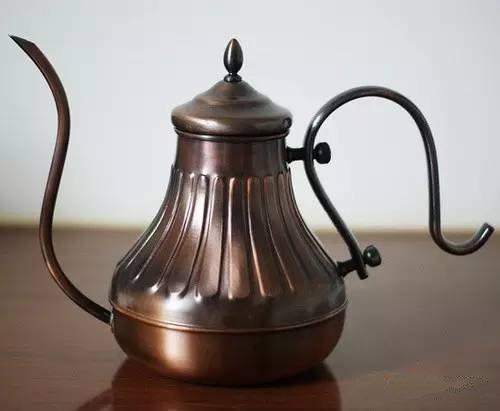
b. Hezui brewing pot: this is a kind of brewing apparatus that the ultimate manual brewing talent dares to try, and it requires very high technical requirements for the brewer to control the flow of water. It is recommended for experienced people to use it.
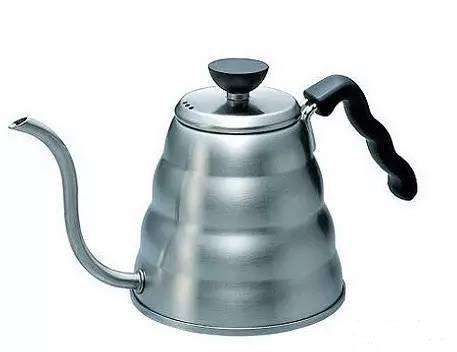
Filter cup classification: the type is divided from the material, the filter cup has ceramic, metal, resin, glass and other types, the filter cup mainly needs to consider heat preservation, ceramics are more thermal insulation. The order of filter cup development is single-hole filter cup (Melitta), three-hole filter cup (kalita gets the true transmission of Melitta), metal filter mesh, V60, blue shape.
a. Single-hole filter cup: single-hole coffee filter cup is invented by Mrs. Merita in Germany. After steaming, water injection can be completed at one time. Shallow baked beans that are easy to plug the holes of a single-hole filter cup are not suitable. They are mainly used for medium-and deep-baked coffee and are quite suitable for German filter cups that like deep-roasting. Slow filtration makes it easy to make coffee with rich content and strong flavor.
Melita hand filter cup has been improved towards automation, and after countless improvements, it has finally been a great success in the United States, which is the most popular American coffee automatic filter machine we see today. But if you take apart an American coffee machine, the principle of the bubble invented by Mrs. Melita has barely changed, only to optimize the shape of the filter and filter paper.
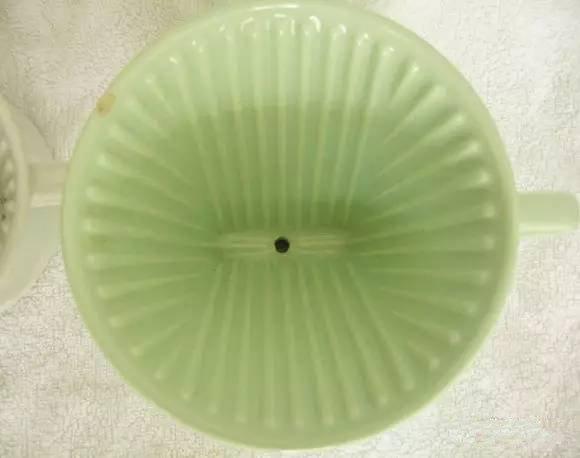
b. Double-hole filter cup: the effect is between single-hole and three-hole.
c. Three-hole filter cup (kalita): also known as Kalita cup. The three filter holes make it easy for air and water to pass through, even if one of the holes is blocked by coffee powder, there are other filters that can be used, which is one of the advantages of the three-hole filter cup, which is suitable for coffee baked at all levels from shallowness to depth. After steaming, water is injected into three stages.
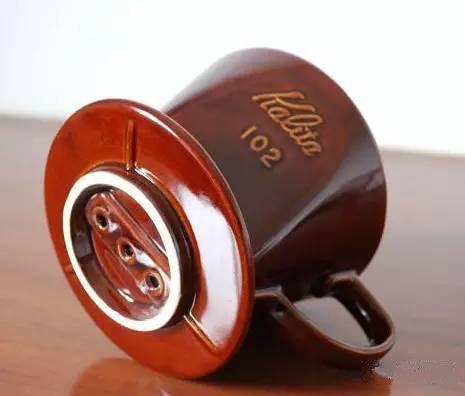
d. Metal strainer: Ruiskin, chemex, timao
Advantages: compared with filter paper, it can retain the oil, original taste, rich and mellow taste of coffee. The most important environmental protection, ah, a filter can be used for a long time.
Disadvantages: coffee grounds are easier to enter the coffee liquid and more expensive than filter paper.
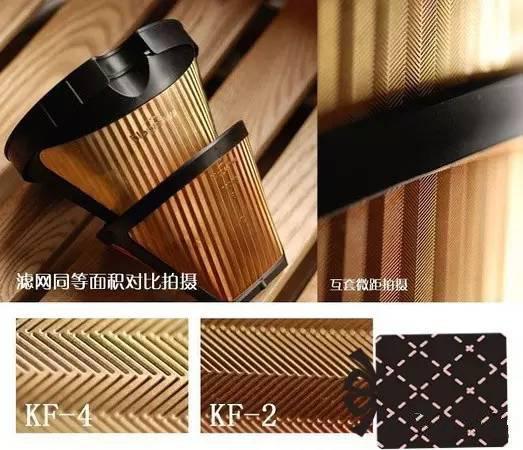
The picture is Swiss gold.
e. Blue filter cup: (cake cup)
The function of groove (rib):
When using the filter paper dripping method to brew coffee, the filter paper will stick to the wall of the filter cup. Without these grooves, after injecting hot water, the air can only be discharged from the filter hole at the bottom of the cup, and the remaining air will be discharged from the surface of the coffee powder in the steaming state. A hole in the surface of the coffee powder will be broken, and the cold air will enter, so that the coffee will not be fully steamed and the formation of the filter layer will be destroyed.
Coffee filter cups, sharing pots, hand pots and other products do not have much technical content, there is no need to catch up with high-end brands, focus on improving their brewing technology, except for those who are not short of money, this is personal advice.
Hand preparation:
1. Prepare thermometers (there are thermometers on some hand pots, which is more convenient)
two。 To prepare a stopwatch, mobile phones usually have a timer function.
3. An electronic scale accurate to grams.
4. Filter cup, filter paper, sharing pot, hand punching pot.
5. The amount of coffee powder can be selected according to the ratio of coffee powder to coffee liquid at 1:13 (if the ratio of coffee powder to boiling water is about 1:15), and the concentration can be adjusted by increasing the amount of coffee powder under the same other conditions (flow rate, brewing intensity, etc.).
6. The fineness of coffee powder can refer to the thickness of white granulated sugar sold on the market. According to the baking degree of beans used, deep-baked beans can be thicker and shallow-baked beans can be thinner. The thickness of the flour can be adjusted according to the variety of beans, the ones with high acidity are finer and those with high bitterness are thicker. The best thing to grasp is to adjust the taste of the final coffee liquid by adjusting the thickness of the powder. if you think the coffee is sour, you can grind the powder finer, if you feel bitter, you can grind it thicker, adjust dynamically.
7. It is best to use a hand flush pot to boil water, if the temperature of the hot water pot drops very fast. The hand flushing pot should have a lid, and the temperature will drop very fast without the lid, and the temperature will be too low before the manual flushing is finished.
8. It is recommended that the water level in the hand-flushing pot is fixed at the beginning of the practice. make sure that the hand-flushing pot has 90% water before you start brewing, so as to find the feel and control the water flow.
9. Choice of brewing water temperature: the following water temperature is a reference basis, which can be adjusted according to your preferences and brewing habits.
When using filter paper dripping method, the best taste balance can be achieved when the water temperature is 82 °C ~ 90 °C (mainly depends on beans, this is just an example). Exceeding this temperature will make some flavors particularly obvious, and if you don't reach this temperature, you won't be able to extract enough delicious ingredients.
Steaming principle:
a. The main function of steaming is to form a good filter layer, a small amount of hot water permeates all the coffee powder and rest for a while to form a filter layer.
b. The air between the coffee particles will produce a state of thermal expansion, and the coffee particles themselves will release a large amount of carbon dioxide, forming bubble-like voids between the particles, which will make the coffee powder form a uniform filter layer and provide the space needed for hot water to pass through. From the outside, it is the formation of the so-called "volcanic bag".
c. The voids formed by good coffee steaming are approximately uniform, and the velocity of the coffee liquid dripping downward is also uniform. If a good filter layer cannot be formed, the filtration rate will become slower, resulting in excessive extraction.
Precautions for steaming:
a. The current needs to be gentle and uniform.
b. There is too little steaming water, and there is still a lot of coffee powder not soaked in the water, which will lead to subsequent brewing, when the coffee powder that is not soaked in hot water suddenly encounters a large amount of hot water to produce bubble expansion, hindering stable filtration.
c. When there is too much steaming hot water, the middle and upper coffee powder immediately produces a large amount of gas and stays in the middle of the layer, preventing the powder from being pre-leached, causing too much hot water to flow directly to the bottom of the cup along the wall of the filter cup and into the sharing pot.
d. Stuffy steaming is not good, the coffee taste will not be clean, mainly sour, coffee itself is difficult to reflect, the taste is thin, with irritation, the aroma is not dignified enough.
Steps for making coffee by hand (take filter paper as an example):

1. Fold the filter paper, put it into the filter cup, and stick the filter paper to the filter cup. The filter cup sits on the sharing pot.
two。 Wash the filter paper and cup with boiling water, and the water falls into the sharing pot to warm the cup.
3. The whole hand flushing time is completed in 2-3 minutes, including steaming time.
4. Pour the coffee powder into the filter cup and shake the filter cup to smooth the coffee powder.
5. Choose the appropriate water temperature and refer to the water temperature described above. For beginners, it is best to have the same amount of water in each hand flush pot.
6. Steaming: sprinkle hot water gently, softly, quickly and evenly on coffee powder, about 10ml, spout 3-4 cm away from coffee powder, pour water from the center of bean powder, circle 2-3 times, all coffee powder can absorb water evenly, it is best to drop 3-5 drops of coffee liquid. The time of water injection and steaming is 15-25 seconds.
7. For the first time after steaming, take the center of the coffee powder as the center, and draw a circle with an appropriate fine water flow. Remember that the water flow should not directly touch the filter paper (otherwise the coffee will be astringent). Pay attention to keeping the circle within 1 cm from the edge of the coffee powder. The height of the current is maintained at about 4cm with the coffee powder on the surface of 3Murray. The amount of water injected for the first time accounts for 60% of the total amount of coffee.
8. Pause after the first water injection, wait for the water in the coffee powder to flow down completely, start the second water injection, the method is the same as the first water injection, the amount of water injection accounts for 30%.
9. Pause after the second water injection, wait for the water in the coffee powder to flow down completely, start the third water injection, the method is the same as the first water injection, the amount of water injection accounts for 10%
10. When you reach the amount of coffee liquid extract, remove the filter cup immediately, regardless of whether the coffee liquid can still be dripped in the filter cup.
Important Notice :
前街咖啡 FrontStreet Coffee has moved to new addredd:
FrontStreet Coffee Address: 315,Donghua East Road,GuangZhou
Tel:020 38364473
- Prev

Seven factors affecting hand-brewed coffee
For a long time, several variables affecting hand-brewed coffee are as follows: 1. Coffee beans; 2. Degree of grinding; 3. Water; 4. Equipment; 5. Steaming time; coffee beans choosing coffee beans that suit your taste is an important criterion to determine whether your cup of coffee tastes good or not. Many people say that it is too light, astringent and miscellaneous, and the first thing we consider is coffee beans. If the roasting degree of coffee beans is too light,
- Next
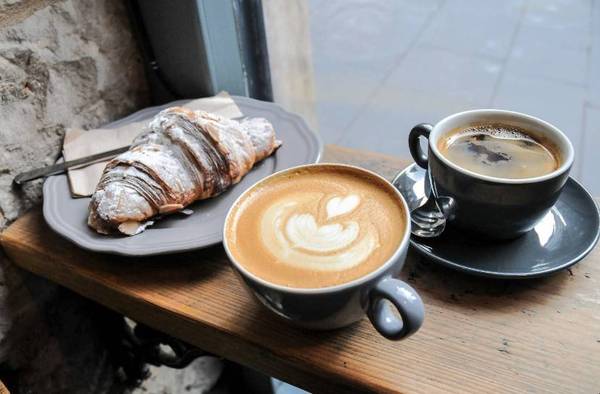
Beginners must see-the basic equipment needed for coffee flower drawing.
1. Italian professional coffee machine is distinguished according to the cooking and heating system of the boiler, which is generally divided into four types, namely, single boiler system, parent boiler system, double boiler system and multi-boiler system. Four different boiler brewing and heating systems will be different when we brew espresso, and the main reason for the difference comes from the different configuration of the boiler.
Related
- Beginners will see the "Coffee pull flower" guide!
- What is the difference between ice blog purified milk and ordinary milk coffee?
- Why is the Philippines the largest producer of crops in Liberia?
- For coffee extraction, should the fine powder be retained?
- How does extracted espresso fill pressed powder? How much strength does it take to press the powder?
- How to make jasmine cold extract coffee? Is the jasmine + latte good?
- Will this little toy really make the coffee taste better? How does Lily Drip affect coffee extraction?
- Will the action of slapping the filter cup also affect coffee extraction?
- What's the difference between powder-to-water ratio and powder-to-liquid ratio?
- What is the Ethiopian local species? What does it have to do with Heirloom native species?

